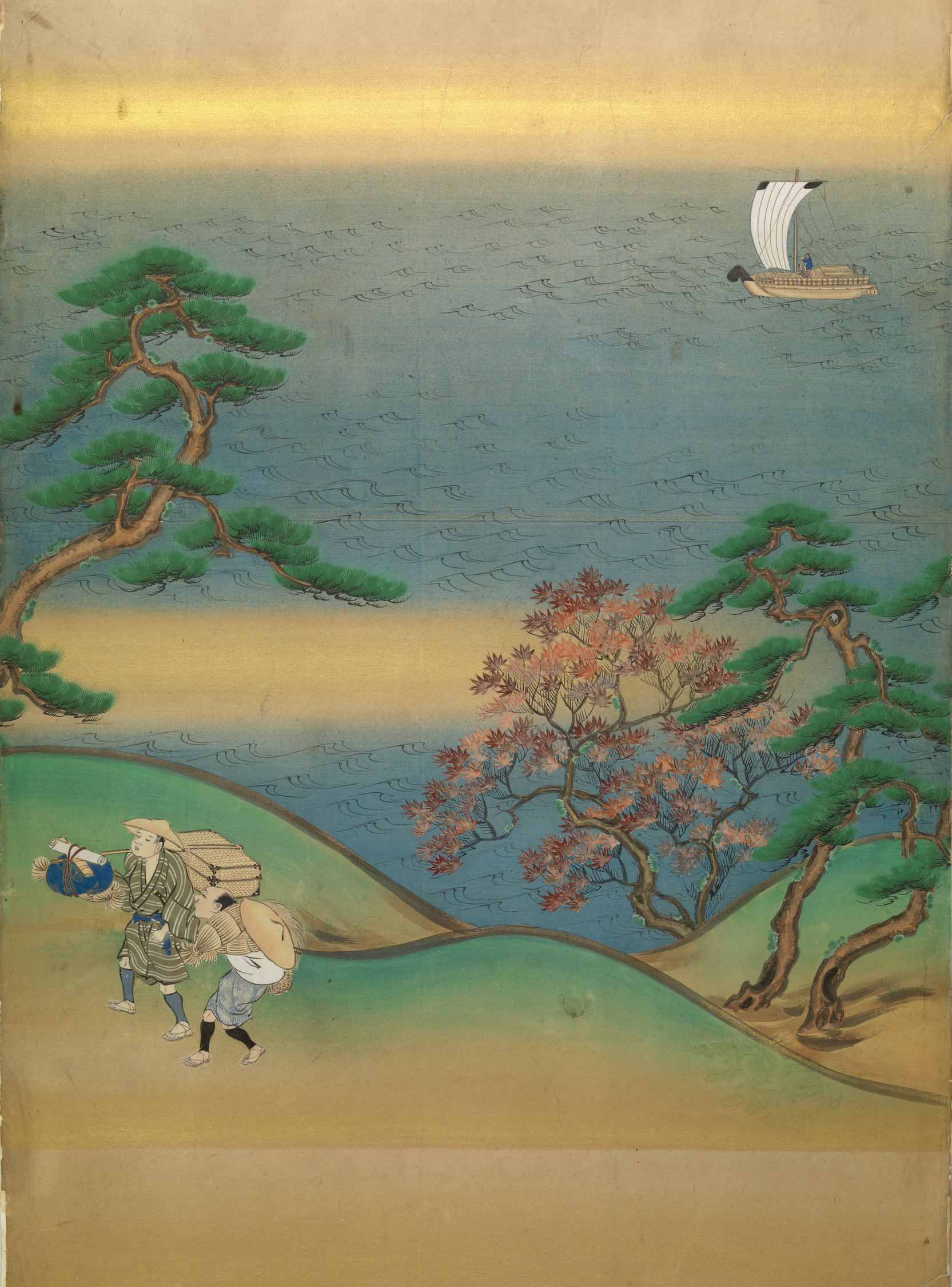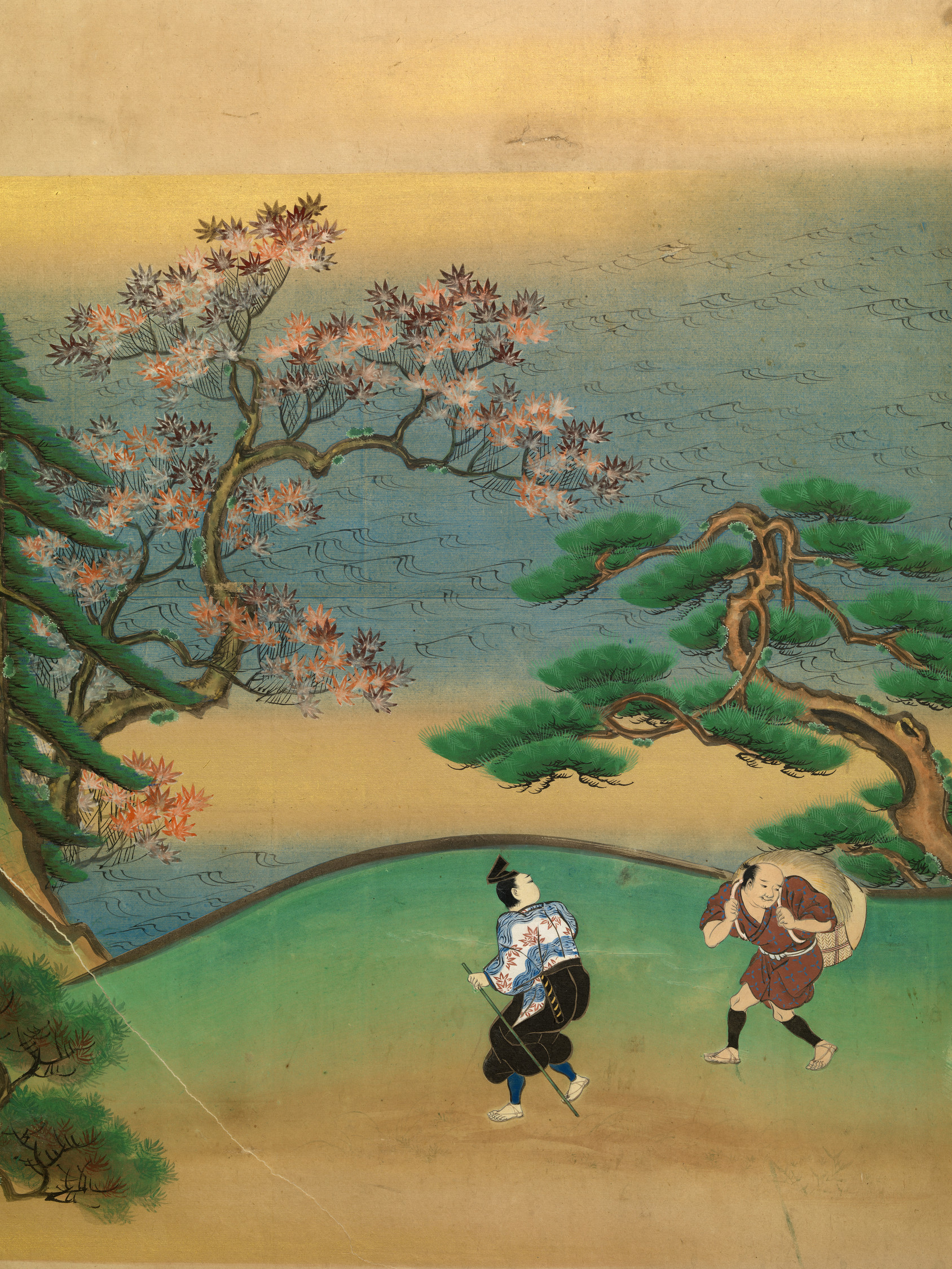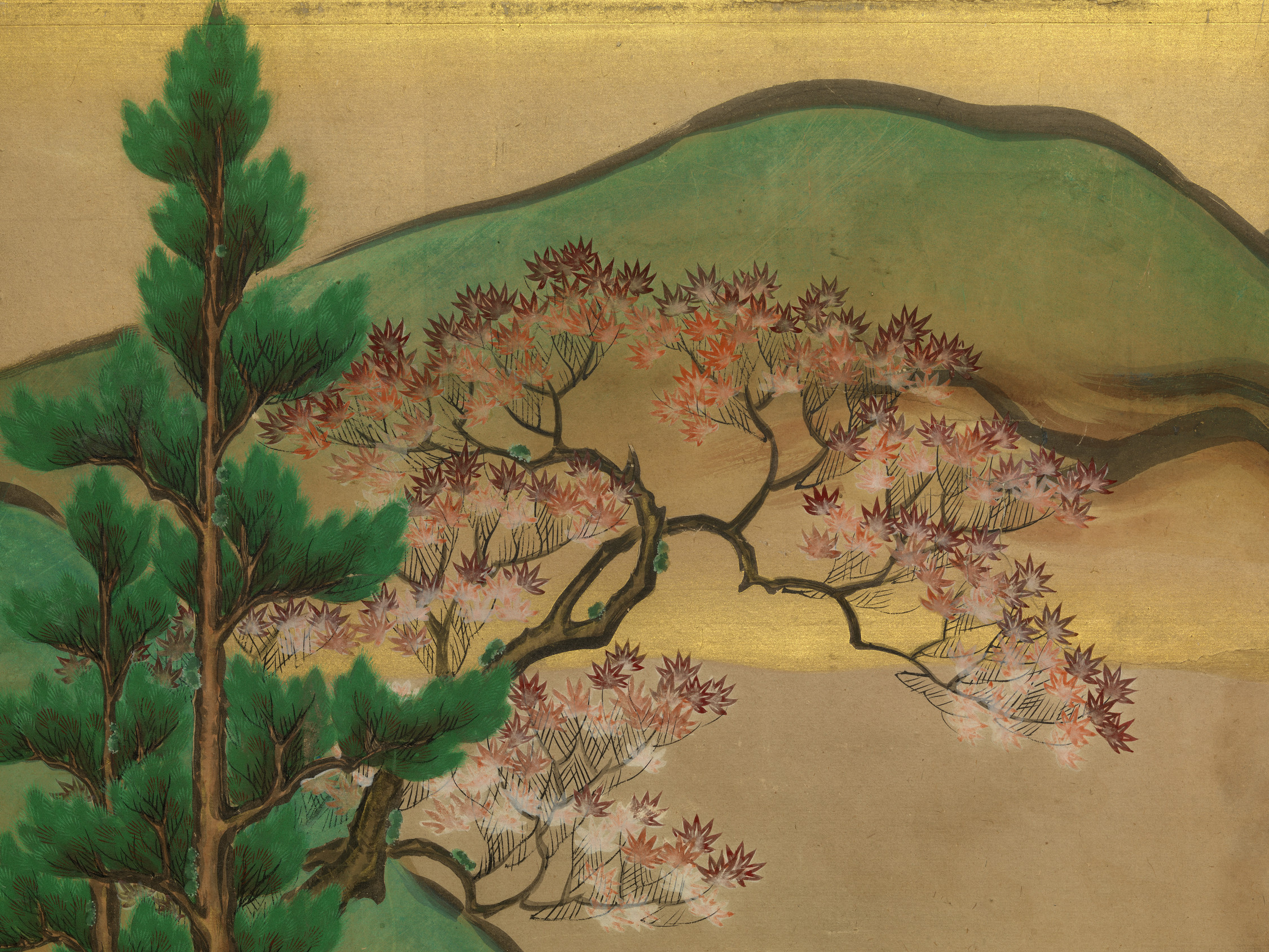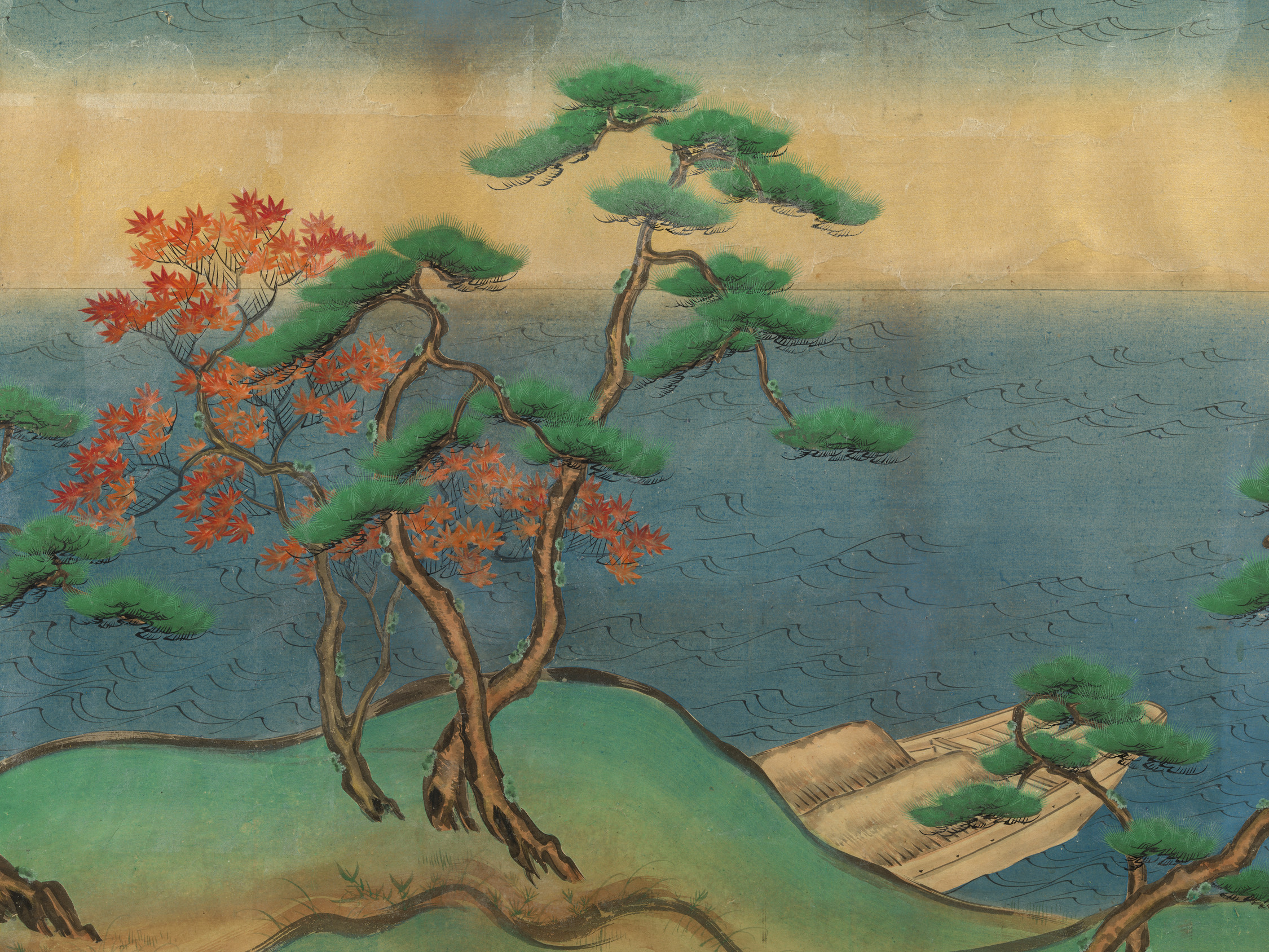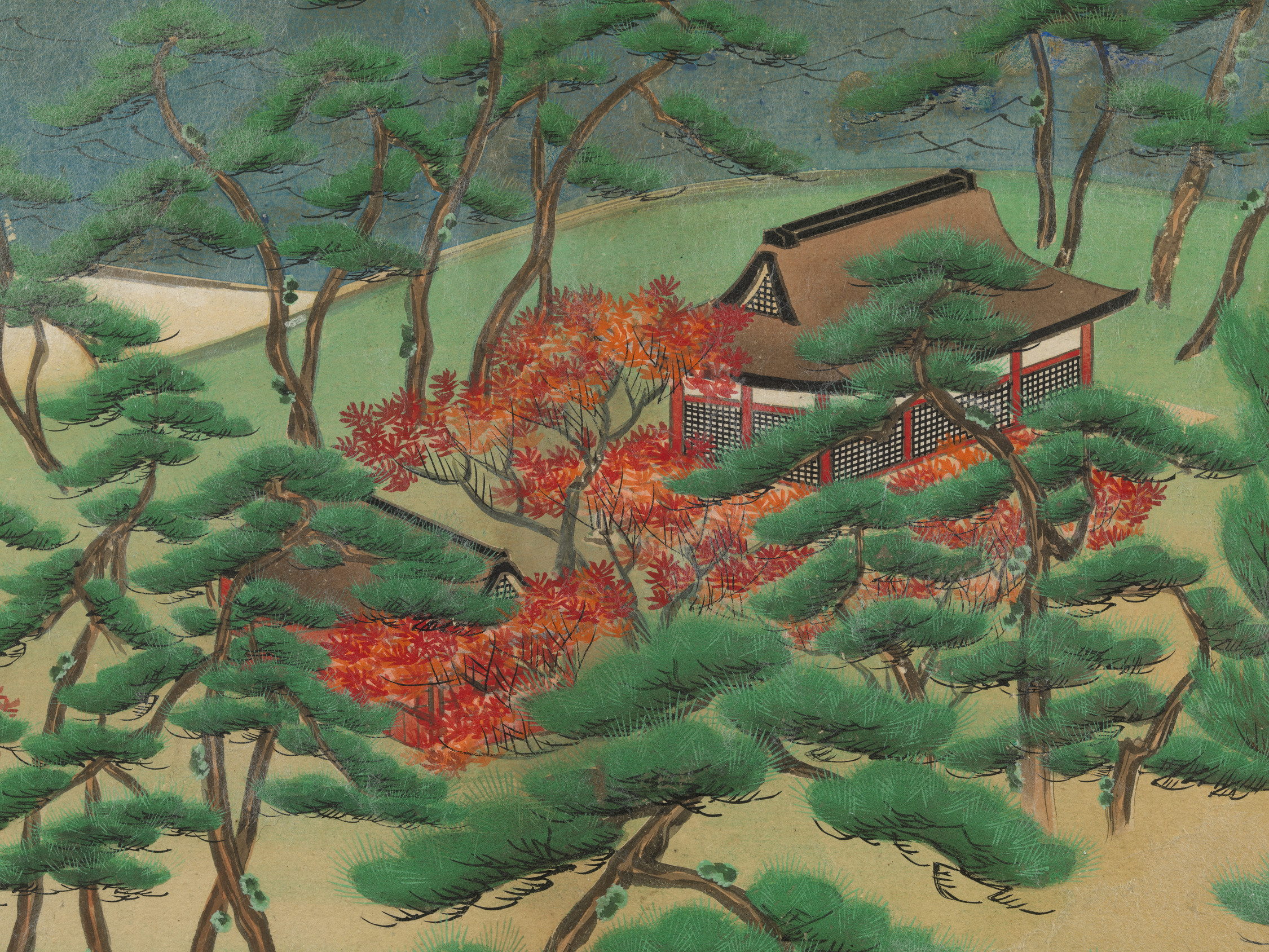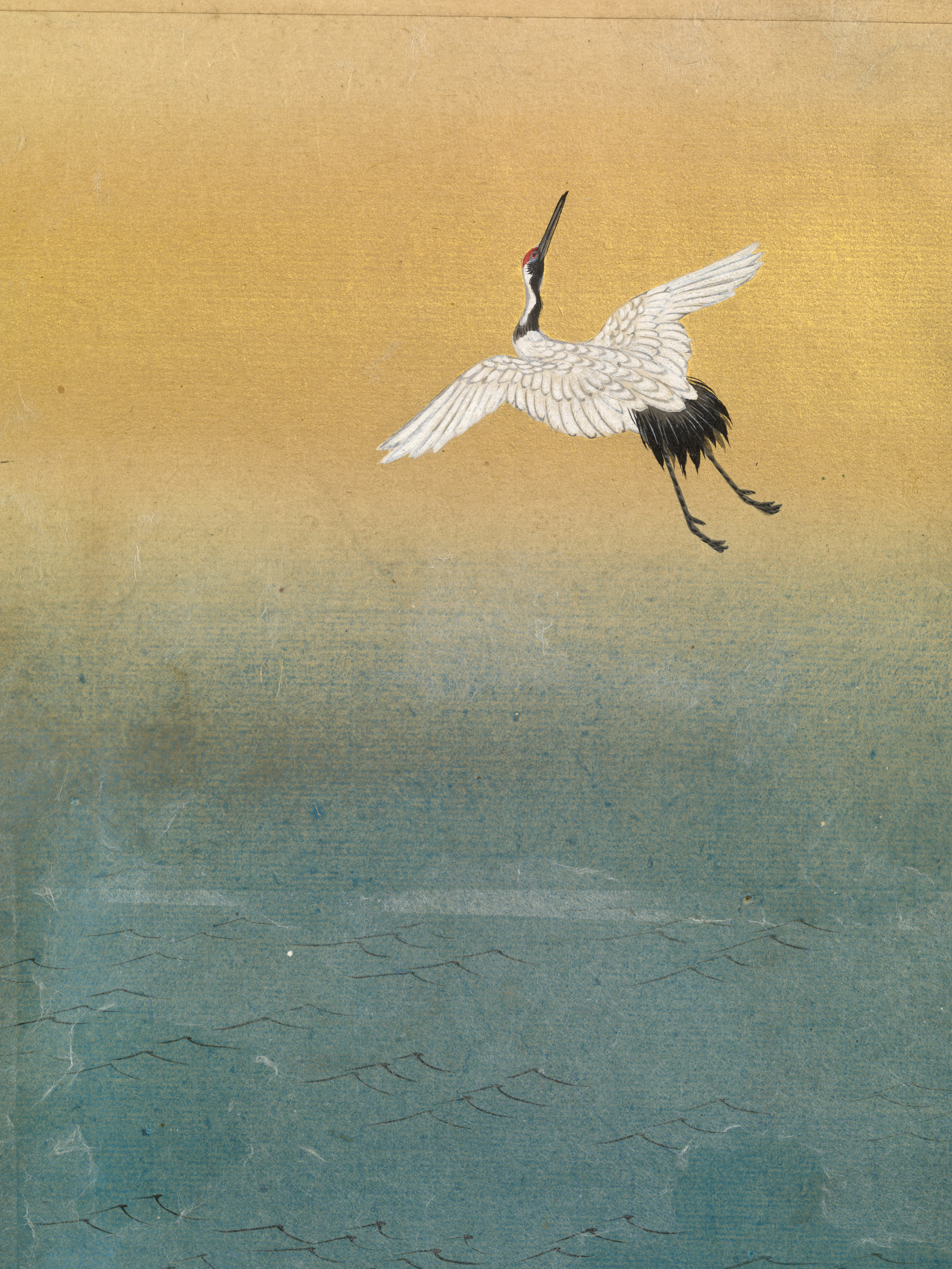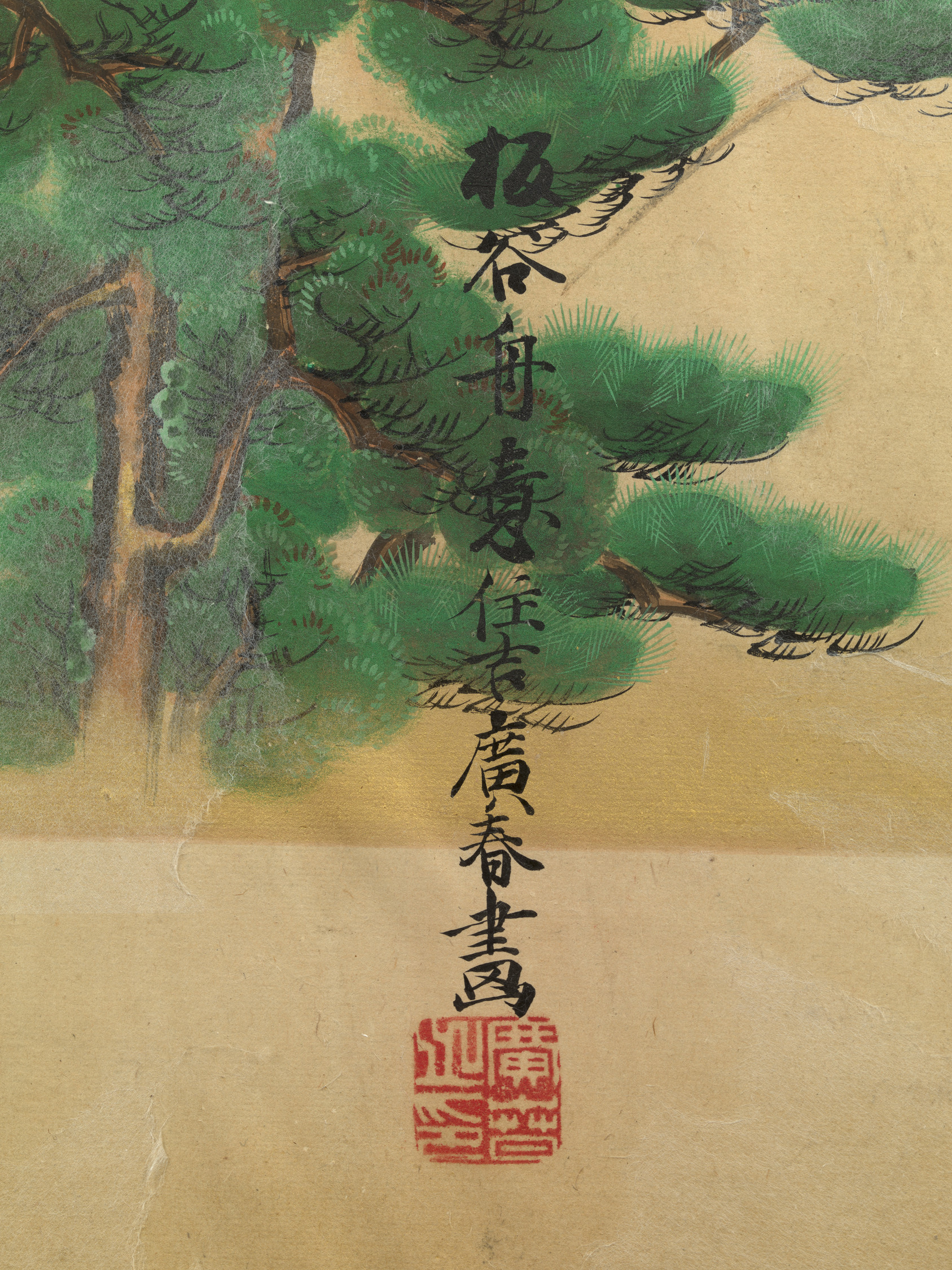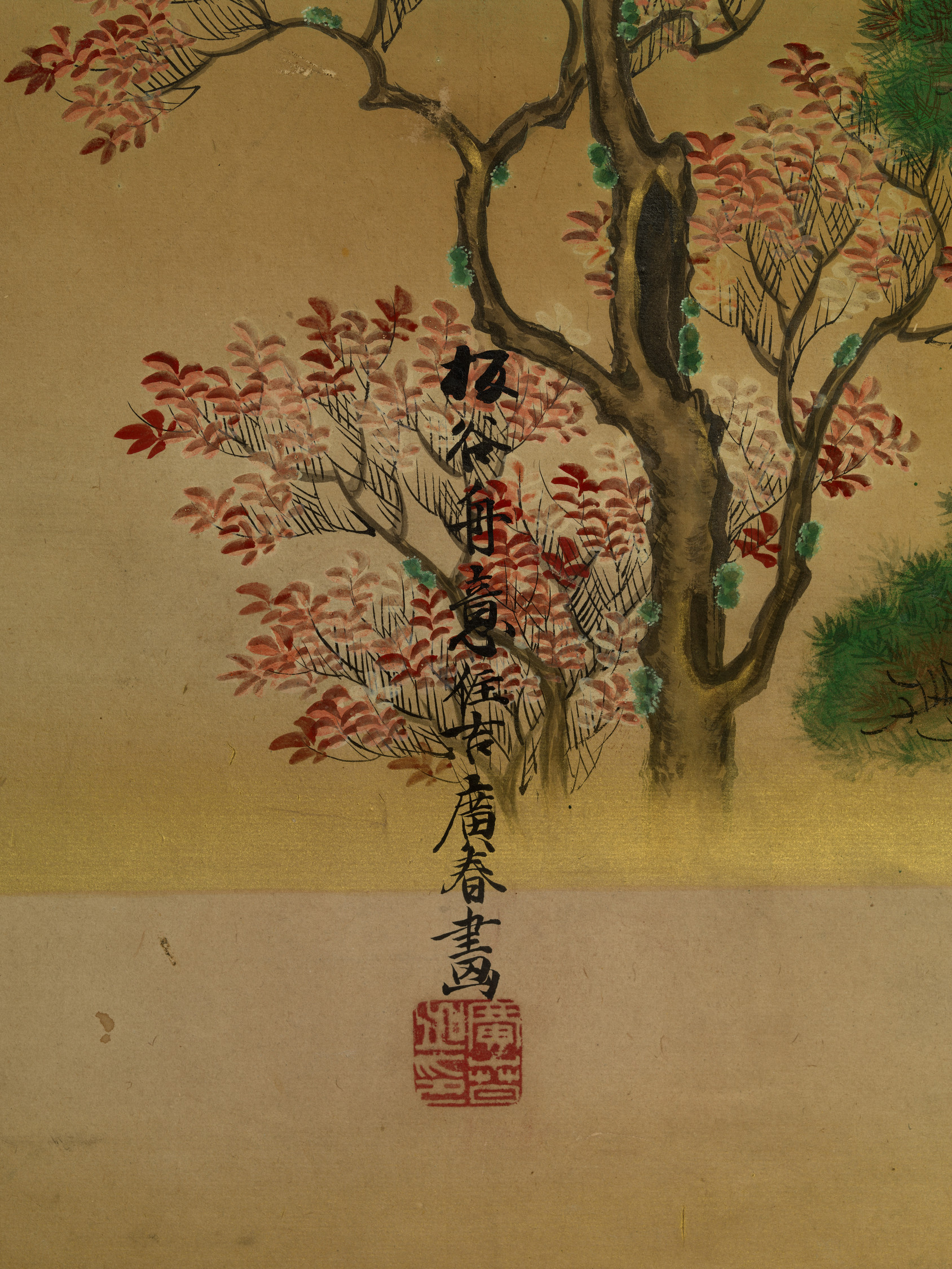
Folding Screen Paintings
Restoring a rediscovered diplomatic gift from Japan
What are the Screens?
What are screen paintings?
Folding screen paintings (byōbu) had been choice Japanese diplomatic gifts since the sixteenth century. In fact, the very first diplomatic gift to Britain – sent to James I in 1613 – included ten gilded folding screen paintings, as well as two samurai armours. These impressive works are sometimes referred to as ‘the face of Japanese diplomacy’.
This size and type of screen was an ideal vehicle for showcasing the painting skills of the finest Court artists of the day. The screens are designed to be shown open. Papered hinges and a lightweight wooden core eliminate the need for intrusive frames separating the panels, allowing enjoyment of a continuous horizontal image.
The scenes
These folding screen paintings are a pair, intended for display side-by-side. Together, they show the changing seasons.
The first painting depicts Mount Fuji – Japan’s most iconic mountain, and a sacred peak – in the spring. Cherry blossom appears by pine trees in the foreground, along with figures carrying packs. It is painted from a high viewpoint looking across the Fuji Five Lake region (Fujigoko) at the northern base of the mountain.
The second screen shows Miho-no-Matsubara, a spit of land covered by pine trees. The foreground is filled with evergreen pines and maple trees in rich autumnal tones beneath cranes in flight.
A choice diplomatic gift
Shōgun Tokugawa Iemochi sent these folding screen paintings to Queen Victoria in 1860. They formed part of the first diplomatic gift between Japan and Britain in almost 250 years, celebrating a landmark treaty that had reopened seven Japanese ports and cities to British trade and allowed a British diplomat to reside in Japan for the first time. The agreement marked an end to centuries of Japanese self-isolation (sakoku) and ushered in a new era of courtly, diplomatic and artistic exchange.
The lavish gift also included lacquer boxes, polearms, spears inlaid with glittering mother of pearl, and swords by leading court swordsmiths, many of which are also on display in Japan: Courts and Culture.
Discovery in the Royal Collection
Details of the screens’ history were forgotten over the decades and their link to Shōgun Iemochi lost. This pair were re-discovered in the Royal Collection when translation of the signatures on each revealed they were the work of Itaya Hiroharu (1833-82) – one of the artists likely to have worked on the gifts for Queen Victoria.




